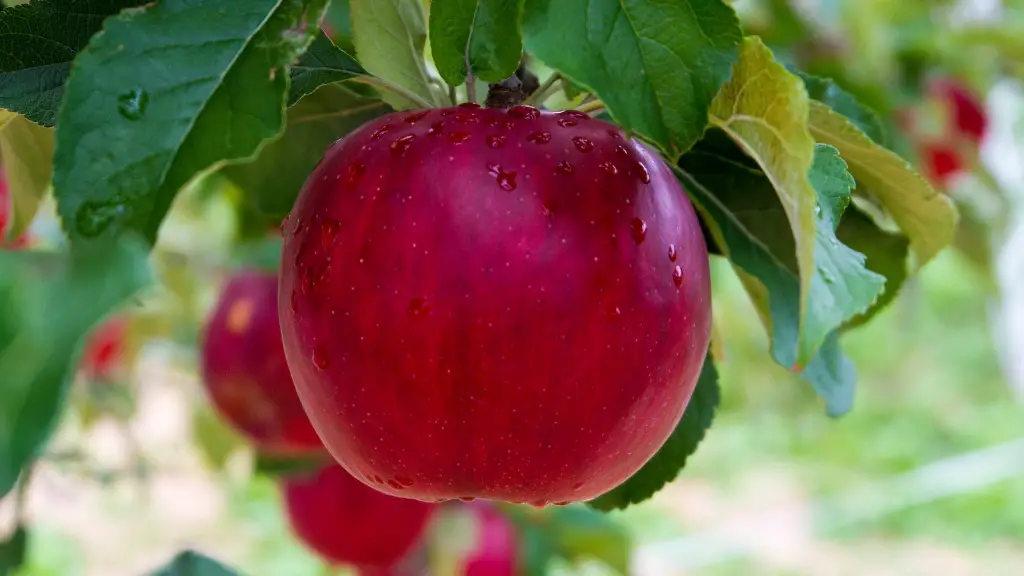Maintaining a Healthy Environment for the Cherry Tree
Winter is a critical time for cherries and understanding your local climate conditions can help protect the beloved cherry tree from extreme weather. A winters-long cold snap can leave the tree wilted, stress them, and even kill them. A starting point for protecting a cherry tree is to give it a healthy environment to resist winter’s extreme cold. An ideal environment is one with a balanced mixture of moisture, protection from the wind, and well-drained soil.
Before winter sets in, cherry tree-owners must check and prune any dead, decaying or diseased branches, such as those with canker. Pruning and selective removal of branches weakens the tree’s natural defences, making it more susceptible to winter damage. Doing this during the fall leads to improved health throughout the winter, according to the Canadian Forestry Service.
“Chilling during the winter is critical,” says Jana Schirmer, Marion County Extension Agent. Throughout winter, there must be adequate chill hours, which is any temperature below 45 degrees Fahrenheit. A planted cherry tree needs around 1,000 chill hours to survive the winter weather, but one has to be careful to not let temps drop below this point.
It is important for homeowners to take the necessary steps to protect their cherry tree during winters, so it will be safe from heavy snowfall and spreading of diseases. “Artificial shading can be used to provide supplemental insulation from snow, wind or frost,” Schirmer said. Covering the trunk of the tree can help as well.
Fertilizing and Watering
Cherry tree owners have to properly nourish the trees to keep them healthy throughout the winter. Professional arborists recommend fertilizing the trees during the spring season, but if this was not done in spring, fall can be the last resort. Applying the right type of fertilizer to the root zone at least once a year is necessary to control any nutrient deficiency.
arborists also recommend exercising caution when it comes to watering. While the tree needs some water throughout the winter season, they should not be watered too heavily. Heavy watering can quickly lead to root rot, a condition where the roots of the tree become flooded with water, thus causing the plant to become diseased or die.
Herbicide and Pest Control
It is important for cherry tree-owners to fight off any pest infestations throughout the year, not just during winter. However, in winter, the owner must focus on any herbicides that have been applied to the tree throughout the year. This includes managing the use of nitrogen, to prevent the growth of weeds that could reduce the cherry tree’s defenses against the cold weather.
Potassium, phosphate and micronutrients are essential during the winter to provide essential nutrients to the plant, such as phosphorus to help initiate root growth. This can help protect the plant’s root system from the cold and drought.
Organic pest control methods like beneficial insects and traps can be used when necessary. However, it is important to identify the pest or disease before choosing the pest control method, as not all pest control techniques work for every problem.
Using Mulch
Mulching is a great way to protect a cherry tree during winter. Homeowners can use mulches like straw, bark, leaves and composted grass clippings on the root zone of the tree to insulate the sensitive roots throughout the cold weather. This particular method of soil care helps trees during freezing temperatures by keeping the roots dormant.
Most importantly, mulching helps in maintaining the ground temperature around the roots of the tree. Research has also found that mulching has the added benefit of improving soil organic matter and soil fertility throughout the year.
Winter Protection Covers
To further protect the cherry tree during winter, some homeowners use cloth and plastic covers to protect the tree from de-icing salts, road sand, wind and chemical pollutants. This type of barrier is often placed near the trunk of a tree and is held in place with stakes or cords.
The covers should be removed once spring arrives and also after winter storms, to make sure it does not get further damage from the storm. Covers must be inspected for any tears, holes or any other kind of damage, as this could lead to the death of a tree if the cover fails to protect it from extreme temperatures or storms.
Windbreaks and Shelters
Cherry trees can suffer from damage from extreme winter winds. A good way to protect them from wind damage is to create a windbreak or shelter. A windbreak or shelter is made up of trees that act as a wall of protection, blocking incoming wind and snow. The trees are planted strategically around the cherry tree and are planted in two or more rows.
If the homeowner does not have enough trees around to create a windbreak, they can use other materials like wood, trees, bales of straw, or fabric. These materials are placed in front of the cherry tree to create a barrier that can protect the tree from extreme wind and snow.
Protection from Winter Canker
Winter canker is a common fungal infection, caused by a variety of fungi that attack cherry trees in cold weather regions. Some symptoms of winter canker include dieback of branches, rotting or oozing wounds on stems and branches, and defoliation. If a cherry tree is infected with canker, it is important to take action before winter so that the infection does not worsen.
Fungicides can be used for preventive control of the disease. Nowadays, homeowners have a long list of synthetic fungicides from which to choose. However, many of these fungicides can damage the soil and cause environmental problems, so it is best to use a natural alternative or organic fungicide.
Salt Sprinkling Moderation
Homeowners in cold regions often use salt as an ice and snow melter to keep their streets and walkways safe, but these can also damage cherry trees if used in an excessive quantity. High levels of salt can harm cherry trees and reduce the nutrient content of their soil.
Therefore, homeowners should be careful while sprinkling salt around their cherry trees to keep them safe during winter. Applying the salt on the walkways and streets is the safest and most effective way to protect them.
Correct Choice of Vulnerable Winter Site
Homeowners should be mindful when selecting a planting location for the cherry tree. It is best to choose a location where there is less rain and a faster rate of melting snow, as this will keep the soil from becoming waterlogged or accumulating too much moisture.
The trees must be planted in an area that is exposed to higher temperatures and a higher rate of sunshine. Avoiding planting sites near trees or buildings with an unpleasant infrastructure layout will also protect the tree from any possible environmental harm.
Snow-Shields Installation
When winter sets in, snow-shields should be installed to ensure that snow will not accumulate around the cherry trees. Snow-shields can also prevent wind and snow accumulation on the trunk of the trees, thus protecting them from any damage.
Homeowners can install snow shields depending on the budget they have available. Prices can range from a simple plastic shield to an elaborate metallic one that comes with an adjustable mechanism.
Antifreeze Treatment
Winter can also be harmful to cherry trees as the cold weather leads to a freeze-thaw cycle which can kill the tree’s root system. Therefore, in severe freezing temperatures, the trees must be sprayed with an antifreeze. Antifreeze sprays freezes the trunk of the tree and prevents the process of freezing and thawing.
Homeowners must be careful while spraying the antifreeze, though, as it must not drip onto any furniture or walls. It is also important to check with local authorities before spraying antifreeze, as it may be prohibited in some areas.
Conclusion
Thanks to this article, you now have a better understanding of how to best protect your cherry tree during winter. It may seem like a lot of steps and changes, but it is an important part of the process to make sure your cherry tree is well protected from extreme cold and from spreading diseases.
Following all the steps detailed above, such as fertilizing and watering properly, using mulch and covers to protect from extreme weather, using antifreeze to prevent freezing and thawing of the roots, and creating a windbreak or shelter will ensure your cherry tree not only survives but thrives. This article’s suggestions may help prepare cherry trees for a peaceful winter, and allowing them to bloom brightly in the springtime.



